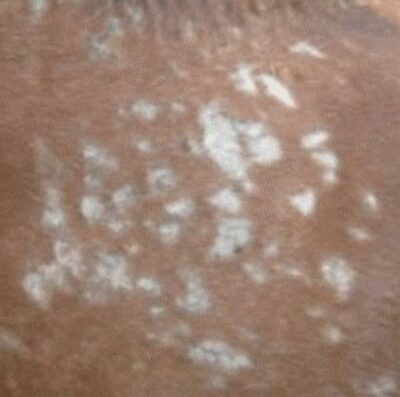Mold in horses
Unfortunately, fungal infection in horses is common it is highly contagious and occurs most often in the winter months due to the humid climate. The official name of the most common fungal infection is skin fungus in horses is Trichophyton, which is a collective name for a number of fungal infections, in particular Microsporia and Trichophytia. Most well-known is ringworm. Fungal infection is transmitted by physical contact.

Fungal infection usually starts with small bumps. If the fungal infection has a chance to spread, these bumps turn into round, bald patches with scales. Most horses do not suffer from itching.
Through a fungal culture, the fungal infection can be diagnosed by the vet. Fungal infection can be treated by anti-fungal drugs such as Antibacterial spray with tea tree which is naturally based. It is important to repeat the treatment regularly because mould spores are not killed all at once.
Horses whose immunity is not optimal are highly susceptible to fungal infection. Rather in young horses than the mature ones.
- For skin recovery, I spray some extra on affected areas on the skin.
- I spray some on my own hands to avoid transferring it to another horse.
- You can also use it to spray your brushes with or use it around the house. Basically just like you would use a disinfectant spray, only in a natural way.
Tip:
- Tea tree oil also repels many insects, including ticks. Before an outdoor ride, I spray some on legs, chest and under the belly so can also be used as an anti-bug spray.